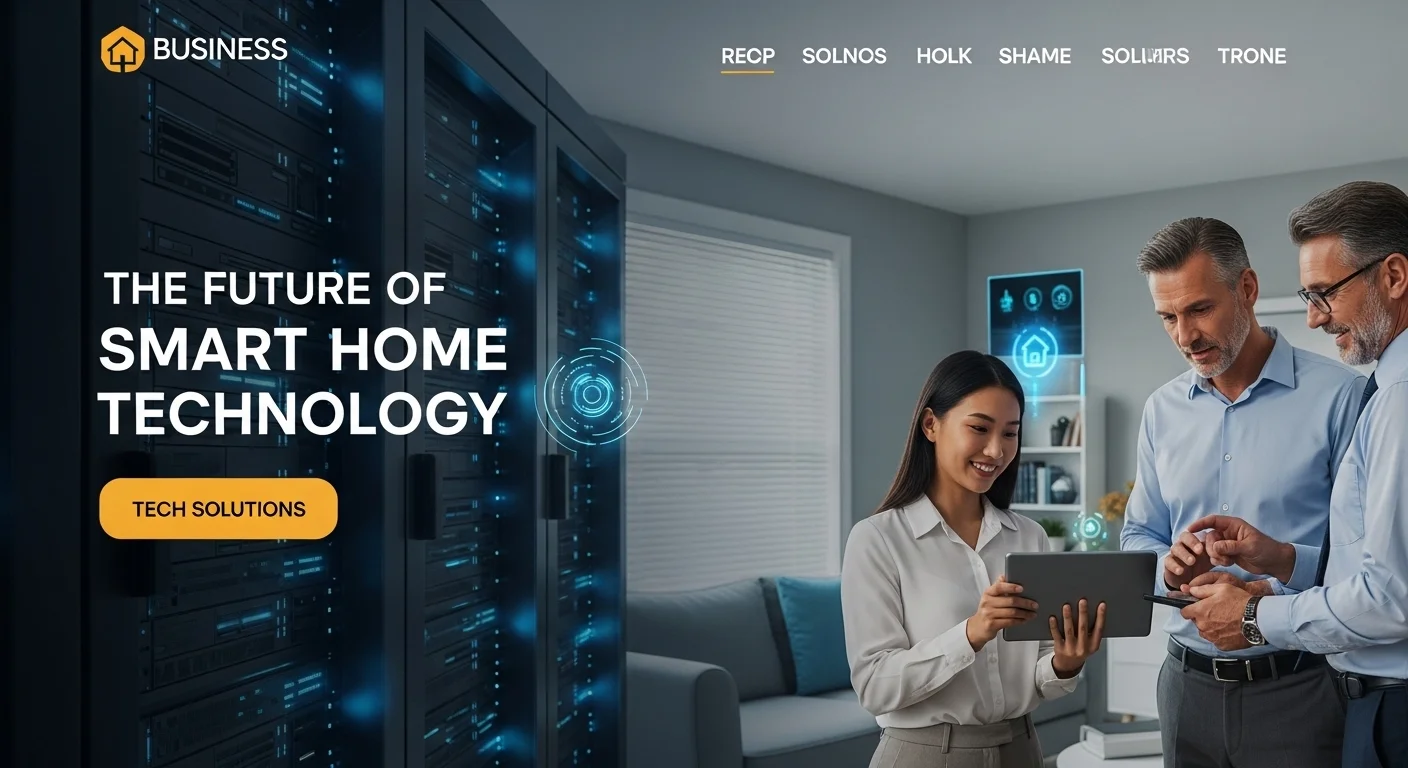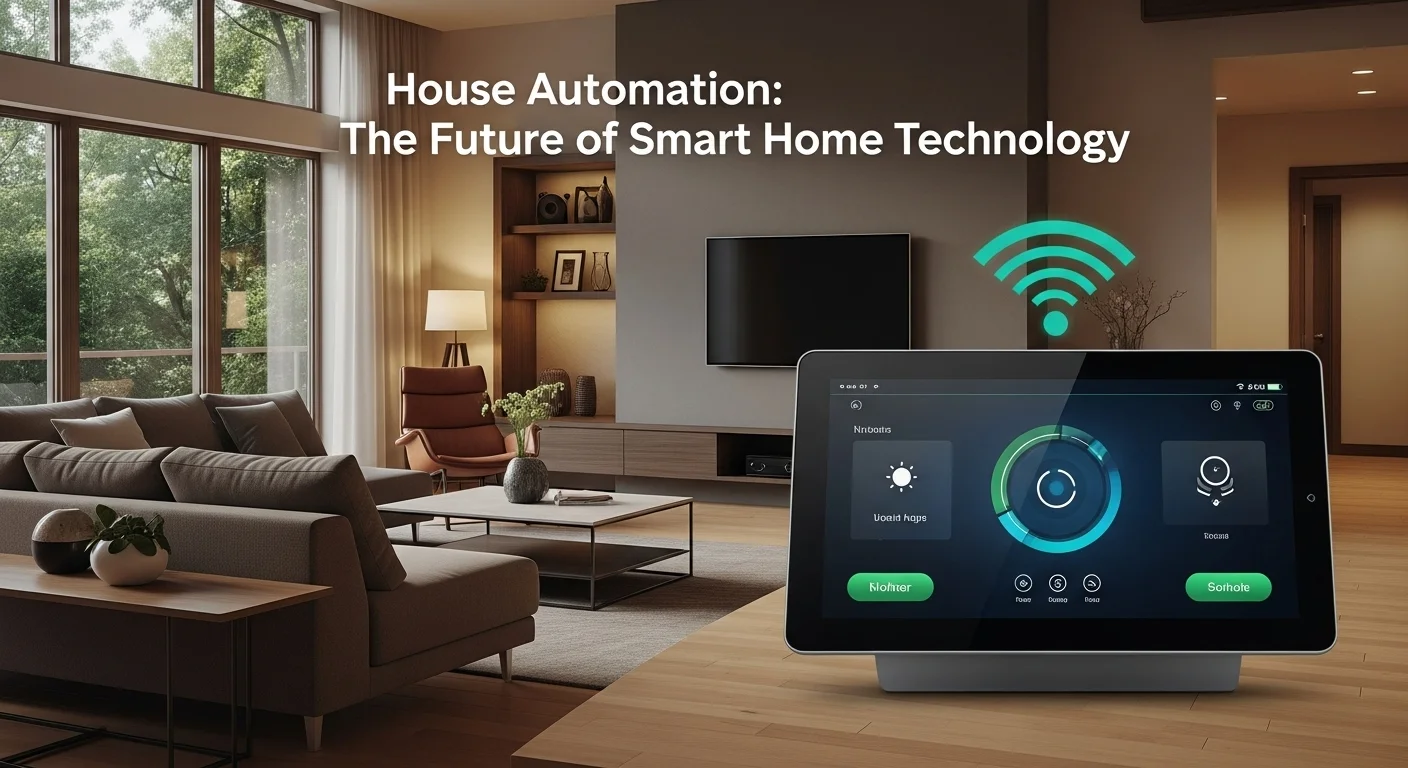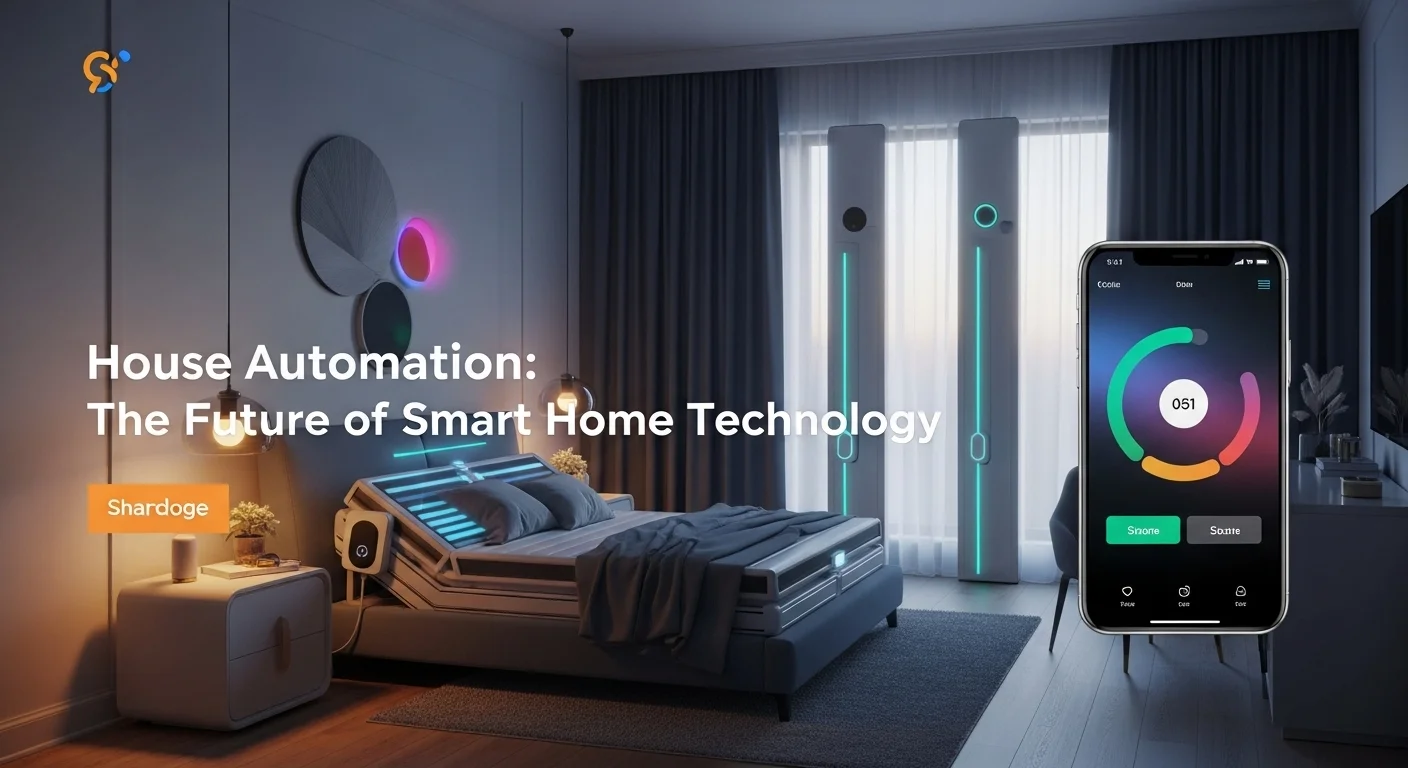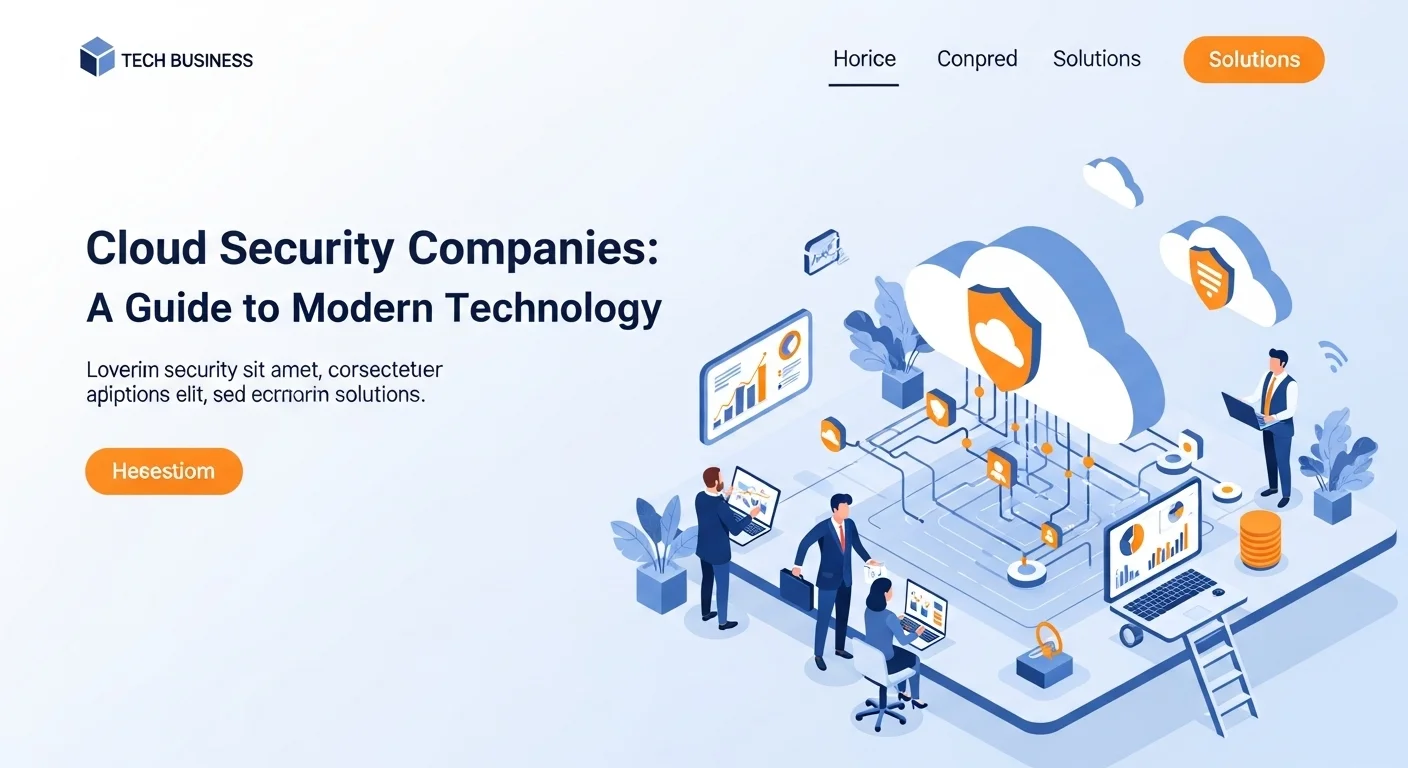Beyond the Gadgets: A Real-World Guide to Smart Home Automation

Executive Summary
My journey into home automation didn't start with a grand plan; it started with a single smart plug and a simple thought: 'Wouldn't it be great if the coffee maker started before I got out of bed?' Years later, that single plug has evolved into a fully integrated smart home that anticipates my family's needs. This isn't just a luxury anymore; it's the next logical step in technology, reshaping how we live and work. For fellow tech enthusiasts, it's a fascinating world of endless possibilities. For business leaders, these same principles are creating smarter, more efficient, and more secure offices and commercial spaces. The dream of a home that runs itself is no longer science fiction. In this guide, I'll share what I've learned on my journey, breaking down the technology, the strategies for businesses, and the practical steps for anyone ready to move beyond a few disconnected gadgets and build a truly intelligent environment.
Table of Contents
Table of Contents
- What is Home Automation, Really?
- The Technology That Makes the Magic Happen
- Beyond the Home: Automation as a Business Strategy
What is Home Automation, Really?
Let's clear something up. Many people think having a voice assistant and a few smart bulbs is 'home automation'. In my experience, that's just scratching the surface. I like to call that a 'smart home with gadgets'. True home automation, or what I aim for in a fully automated house, is when these devices work together as a single, intelligent system. It's the difference between telling your lights to turn on and your house knowing to turn them on because the sun has set and you've just walked into the room. It’s an ecosystem that learns your routines and acts on your behalf. This journey began long before the sleek devices we see today. The seeds were planted back in 1975 with a protocol called X10, which sent signals over a house's electrical wiring. [2] It was clunky, but it was a start. Now, we have a symphony of wireless technologies like Wi-Fi, Zigbee, and Z-Wave creating a responsive network. The new Matter protocol is even trying to get all the different brands to finally speak the same language. This evolution is so important because it's about more than just convenience. It's about tangible benefits: saving energy by turning off forgotten lights, making homes more accessible for the elderly, and providing peace of mind with integrated security. For me, diving into house automation systems was a revelation. It’s where hardware, software, and AI come together to solve real-world problems, and understanding it is key for anyone in tech or business today.
The Technology That Makes the Magic Happen
A fully automated house feels like magic, but it’s built on a few core technologies that work in harmony. Once you understand them, the magic becomes tangible. Internet of Things (IoT): This is the foundation. Think of IoT devices as the system's senses and limbs. The motion sensor is an eye, the smart lock is a hand, the thermostat is the skin. Each device is a physical object with a tiny bit of software that connects it to the internet, allowing it to gather information or perform an action. [14] Artificial Intelligence (AI) and Machine Learning (ML): This is the brain. Early systems were just rule-based: 'IF it's 7 PM, THEN turn on the porch light.' AI and ML give the system the ability to learn. [4, 9] My system has learned that on weekdays we like the house warmer in the morning, but on weekends we sleep in, so it adjusts automatically. It's no longer just programmed; it's becoming intelligent, anticipating our needs without being told. [18] Cloud Computing: If AI is the brain, the cloud is its vast, external memory. It provides the horsepower to process all the data from your devices and allows you to check in on your home from a beach halfway across the world. The cloud is also how manufacturers send updates to improve your devices and patch security holes, keeping your system current. Communication Protocols: These are the languages the devices use to talk to each other. Getting this right is crucial for a reliable system.
- Wi-Fi: Great for data-hungry devices like security cameras, but it can be a power hog.
- Zigbee and Z-Wave: These are my personal favorites for most sensors and switches. They are low-power and create their own 'mesh' network, so they don't clog up your Wi-Fi and are incredibly reliable.
- Bluetooth Low Energy (BLE): Perfect for devices that are close by and don't need constant communication, like a smart lock on your door.
- Matter: This is the new kid on the block, backed by the big players (Apple, Google, Amazon). [17] Its goal is to be a universal translator, so you can buy a device from any brand and know it will work with your system. For anyone planning to automate my house, paying attention to Matter is a great way to future-proof your setup.
Beyond the Home: Automation as a Business Strategy
The tech that powers my smart home is the same tech that's revolutionizing the workplace. Businesses are quickly realizing that the principles of whole house automation are a powerful tool for efficiency and innovation. Smart Buildings and Offices: I've consulted on projects where we've cut a building's energy bill by over 30% simply by automating the lights and HVAC. [22] Using occupancy sensors means you're not heating or cooling empty rooms. It’s not just about cost savings; smart access control enhances security, and monitoring air quality can create a healthier, more productive environment for employees. Hospitality Industry: Imagine checking into a hotel and the room is already at your preferred temperature, with your favorite music playing softly. This is happening now. Hotels are using automation to deliver a personalized, premium guest experience that sets them apart from the competition. Healthcare and Assisted Living: This is where the technology becomes truly life-changing. Automation can provide a safety net for the elderly, with features like fall detection, automated medication reminders, and simple ways to call for help. [7] It gives people the ability to live independently and safely in their own homes for longer, which is an incredible gift. Real Estate and Property Management: I've seen firsthand how a well-implemented automation system can increase a property's value. [16] Smart apartments are a huge draw for modern tenants. For property managers, being able to remotely control access for maintenance, monitor for leaks, and track energy usage across multiple properties from a single dashboard is a game-changer for operational efficiency. For any modern business, this technology is no longer a futuristic idea—it's a strategic imperative.

Complete guide to House Automation in Technology and Business Solutions
Alright, so you're ready to start. Whether you want to automate my house or a commercial space, the path you choose at the beginning will define your entire experience. This isn't just about buying cool gadgets; it's about planning an ecosystem. A successful system is scalable, reliable, and, most importantly, makes your life easier. Let's break down the foundational choices you'll need to make, from the 'brain' of your system to the devices themselves. For businesses, this is also where you start thinking about the return on your investment and how these new systems will talk to the software you already use to run your operations.
Technical Architectures: Centralized vs. Decentralized Systems
When I first started, I didn't realize how critical this choice was. You're essentially choosing between two philosophies for your smart home's brain. [10] Centralized Systems: The Conductor of the Orchestra In this model, a dedicated device called a hub or controller acts as the central brain. [14] All your smart devices talk to the hub, and the hub executes all the commands and automations.
- Examples: For the pros, systems like Control4 or Savant are the top tier. [45] For enthusiasts like me, the gold standard is open-source software like Home Assistant (often run on a small computer like a Raspberry Pi) or user-friendly hubs like Hubitat Elevation.
- Why I Love It: The power and reliability are unmatched. I can create incredibly complex automations that involve devices from ten different brands. Most importantly, with Home Assistant or Hubitat, the processing happens *locally*. If my internet goes down, my house still works. This local control is a massive win for speed, reliability, and privacy.
- The Catch: It can be like learning a new instrument. There's a steeper learning curve, and if the hub fails, your automations stop until it's fixed. It's for the person who enjoys tinkering and wants ultimate control.
- How it Works: You buy a smart bulb, connect it to your Wi-Fi using its brand's app, and then link that app to your Alexa account. You can create simple routines, like 'Alexa, I'm home,' to turn on a few lights. [27, 48]
- Why It's Popular: It's incredibly easy and cheap to get started. [33] You can begin with a single smart speaker and build from there. There’s no single piece of hardware that can fail and take down the whole system.
- The Downside: You are completely dependent on the internet and the manufacturer's cloud servers. If your Wi-Fi is out, your 'smart' bulb is just a regular bulb. If a company goes out of business, your device could become a paperweight. Automations are also slower and less powerful because every command has to travel to the cloud and back.
- Energy Savings: This is the easiest to measure. Smart HVAC and lighting can slash utility bills in commercial buildings. [22] The data these systems provide is invaluable for spotting waste. [7]
- Operational Efficiency: Think of all the manual tasks that can be automated: adjusting thermostats, managing keycards, checking security feeds. This frees up your team to focus on what really matters.
- Enhanced Experience: In an office, a comfortable and responsive environment boosts morale and productivity. In a store or hotel, it creates a 'wow' factor that builds customer loyalty.
- Preventative Maintenance: This is a big one. An AI-powered system can tell you a key piece of HVAC equipment is likely to fail *before* it breaks down, saving you from expensive emergency repairs and downtime. [17]
Business Solutions and Strategic Integration
In a business context, automation isn't a hobby; it's a strategic investment. The thinking has to be more rigorous. Calculating Return on Investment (ROI): When I talk to businesses, we always start here. Where does the money come back from?
Resource Comparison: Platforms and Protocols
So, you've decided to automate my house. The number of choices can feel overwhelming. Here’s my personal breakdown of the major players.
Major Ecosystems Comparison:
| Ecosystem | Best For | Pros | Cons |
|---|---|---|---|
| Home Assistant | The Tinkerer Who Wants Ultimate Control | Total local control (privacy/speed!), endlessly customizable, works with almost everything, amazing community. | Steep learning curve, requires dedicated hardware, it's a hobby in itself. |
| Amazon Alexa | Easy Voice Control & Massive Device Support | Best-in-class voice commands, huge library of compatible 'skills' and devices, very easy to start. [48] | Relies on the cloud, complex automations are tricky, constant privacy questions. [48] |
| Google Home | Simplicity & Seamless Google Integration | Clean, intuitive app, great if you're deep in the Android/Google world, solid voice assistant. [48] | Cloud-dependent, supports fewer devices than Alexa, privacy questions. |
| Apple HomeKit | The Privacy-Focused Apple User | Excellent security and privacy by design, works flawlessly with Apple products, very reliable local control with an Apple TV/HomePod. | Device selection is limited and often more expensive, less flexible for complex customization. [48] |
Starting with a clear plan and choosing the right foundation is everything. It will determine whether you end up with a powerful, helpful system or just a box of frustrating gadgets.

Tips and strategies for House Automation to improve your Technology experience
Building a fully automated house is a marathon, not a sprint. Once you have the basics set up, the real fun begins: refining the system until it feels truly intuitive and secure. A smart home that isn't secure is a liability, and one that's complicated to use is just a nuisance. Over the years, I've learned that focusing on security, privacy, and the user experience is what separates a tech demo from a truly intelligent home. These are the advanced strategies I share with everyone, from businesses to fellow hobbyists, to ensure their investment in technology is safe, reliable, and genuinely improves their daily lives.
Cybersecurity: Fortifying Your Automated Environment
When you decide to automate my house, you're essentially adding dozens of new doors and windows to your digital life. You have to be the one to lock them. A security breach in a smart home isn't just about data; it could mean a physical security risk. [32] This is non-negotiable.
- Lock Your Front Door (Your Router): Start here. Log into your Wi-Fi router and change the default admin password immediately. Give your Wi-Fi network a strong, unique password and use WPA3 encryption if you can (WPA2 is the absolute minimum). [38]
- Put Your Gadgets in a Playpen (VLANs): This is my number one tip for anyone serious about security. Create a separate network, called a VLAN, just for your IoT devices. [37] This isolates them. So, if a hacker manages to compromise your cheap smart plug, they're stuck in the 'playpen' and can't get to the important stuff on your main network, like your laptop with your banking info.
- Be the Bouncer (Firewall and Monitoring): A good firewall acts as a bouncer, blocking suspicious characters from getting in. More advanced firewalls also let you see what your devices are doing. If you see your smart toaster trying to connect to a server in a strange country, you know something is wrong.
- Use Unique Keys and Double Locks (Passwords and MFA): Every single smart home service should have its own unique, strong password. Use a password manager to make this easy. More importantly, turn on Multi-Factor Authentication (MFA) everywhere you can. [38] It's like having a second lock. Even if someone steals your password, they can't get in without the code from your phone.
- Keep Your Armor Updated (Firmware): Manufacturers release updates to patch security holes. [38] Turn on automatic updates. If a device requires manual updates, I put a reminder in my calendar every month to check. An out-of-date device is an open invitation for trouble.
Privacy by Design: Managing Your Data
In a smart home, data is the currency. You need to be in control of who gets it and what they do with it. Choose Local Control First: This is why I'm such a huge advocate for platforms like Home Assistant. [30] When your automations run locally on a hub inside your house, sensitive data about your daily habits isn't being sent to a corporate server for analysis. It drastically reduces your digital footprint. Be Wary of Eyes and Ears: Any device with a microphone or a camera deserves extra scrutiny. I use physical covers on all my indoor cameras when I'm home. I also periodically go into my Google and Alexa settings and delete old voice recordings. Think carefully about where you place these devices. Question Everything (App Permissions): When you install a new app for a smart device, it will ask for permissions to access your phone's location, contacts, etc. [32] Be ruthless. Does the app for your smart light switch really need to know who your contacts are? If it's not essential for it to function, deny the permission.
Creating an Intuitive User Experience and Advanced Automations
The whole point of this is to make life simpler, not more complicated. The ultimate test for any automation I create is the 'Guest Test'—can a guest or family member who isn't a techie still easily control things? Design 'Magic Moments' (Scenes/Routines): The best automations feel like magic because they anticipate a need. [33]
- 'Good Morning' Scene: My alarm goes off, which triggers the scene. The lights in my bedroom slowly fade on over five minutes, the blinds open, the thermostat kicks on, and the kitchen speaker starts playing a morning news briefing.
- 'Movie Night' Scene: One voice command dims the main lights to a soft blue, turns on the accent lighting behind the TV, and makes sure the front door is locked.
- 'Goodbye' Scene: When the system detects that the last person's phone has left the house, it runs this routine: all lights off, thermostat to 'eco' mode, TV off, doors locked, and security system armed.
Expert Reviews & Testimonials
Sarah Johnson, Business Owner ⭐⭐⭐⭐
As a small business owner, I was looking for ways to cut energy costs. This article gave me a clear breakdown of the ROI. The section on smart offices was exactly the practical advice I needed. A great starting point.
Mike Chen, IT Consultant ⭐⭐⭐⭐⭐
Finally, an article that explains centralized vs. decentralized systems without being overly technical. The 'orchestra vs. garage band' analogy clicked for me. It helped me decide that a Home Assistant setup is the right path for my home lab.
Emma Davis, Tech Expert ⭐⭐⭐⭐⭐
This is one of the best overviews I've read. The emphasis on security, especially creating a separate VLAN for IoT devices, is critical advice that's often overlooked. Truly expert-level information presented clearly. I'm sharing this with my colleagues.



